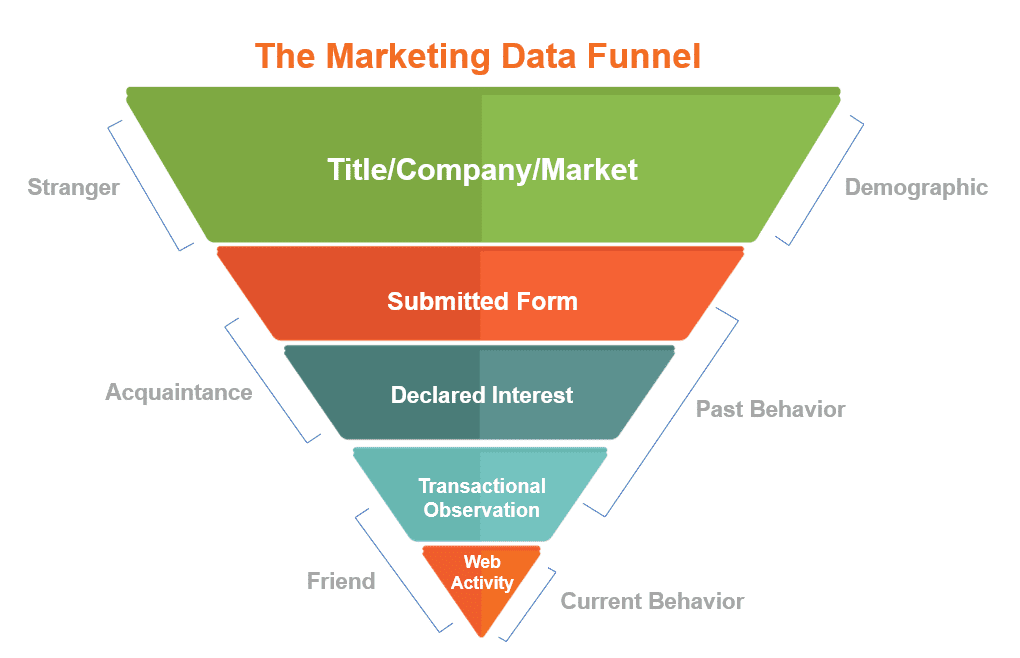
Web Tracking – the Ultimate Member Service
See how web tracking, a powerful tool within marketing automation, can help your association target and personalize member content.
Everyone knows the classic example of web tracking – you view a pair of shoes on an online store, and then they stalk you around the internet for the next three years, showing you ads everywhere you go. They’re annoying, intrusive, and the exact opposite of what we want our members’ experience to be.
But automated email web tracking is the complete opposite.
Using your email marketing platform to provide targeted messaging to known users who interact with your emails isn’t intrusive advertising. It’s a method of member engagement that allows your association to provide the right information to members without pestering them with emails they aren’t interested in.
When used effectively as part of an overall email campaign strategy, web tracking target groups can consistently yield higher results and lower unsubscribes than traditional interest groups. This is especially true when used in drip campaigns, as you can meet the customer at the exact point when they are interested in membership, or an event, or a product.
Think of it like this – in a mall, sales associates generally come up to you as you walk into different stores, tell you about any specials and offer help. And if you have a store’s app on your phone, you may get a push notification when you get near the store, telling you what specials they have.
Web tracking drip campaigns are a much less intrusive version of customer service at the mall.
What is Web Tracking in Marketing Automation?
If you’re unfamiliar, web tracking in email automation is a process where you add code to your website, and then a cookie is placed on a user’s browser when they click through on one of your mailings, making them a “known user.” As long as that cookie remains, it tracks that user’s activity on your website in that browser and writes that information back to you.
Unlike the cookie that lets the shoes follow you around the internet, these cookies only observe and record activity specific to your website. The data is then available for you to take action by sending them emails on things relative to their web activity.
Web Tracking Makes the Marketing Data Funnel More Powerful

Demographic information such as title, company, and industry/market are common pieces of data that are readily available to marketers. Beyond that, we may have information on past interests from forms fills and declared interests, as well as a stronger show of interest through transactions – products, services, webinars, and events the person has paid for in the past. Web tracking is the next evolution of targeting information, allowing us to target people with their current interests in near real-time.
As marketers, we have traditionally had to rely on demographics as the main source of what a prospect may be interested in. If we’re lucky, a prospect may have submitted a form online and given us more information. They may have gone on their profile and updated the broad interests we have available.
Prospects who have had transactions with us in the past allow us to know what their interests were when they made the transaction. We can point to events they attended or a certification they received.
But these are all historical data points. We get the finest, timeliest, and most precise data insights through web tracking.
For example, say you wanted to use web tracking to promote your annual conference. Here are 6 ways you could use it:
- Pull lists of people who have visited your event site and market to them with one-off emails.
- Create a drip campaign to provide underlying marketing support for your event while you’re marketing main highlights with one-off emails. The drip campaign will collect known users who click through on your event emails to your website and nurture their interest with the underlying reasons they attend.
- Put your sponsor/exhibitor prospectus on a landing page, then add those who download to a drip campaign that qualifies them with information in your database before sending them on to your sponsorship/exhibitor team.
- Send your pre-conference and post-conference emails through the same email campaign software to increase the number of known users through clicks. This furthers your ability to provide them with more timely information only on what they’re interested in at the moment they’re interested in it.
- Create a landing page for next year’s conference and put that up on the annual conference site as soon as the event ends.
- Create a nurturing campaign with periodic links to content from the annual conference on the website throughout the next 6-9 months for attendees and anyone who signs up. This helps remind attendees and inform prospects of the quality of the content throughout the year until you start marketing the next one.
Of course, you don’t have time to follow each one of your members and prospects around and send one-off emails to nurture them at the moment they visit your site, but that’s what automated email campaigns are for. Putting together a strong automated email campaign structure not only helps you free up time for other promotional ideas, but it also ensures that your members are getting information of interest to them at the moment of interest. It also keeps your pipeline going for potential growth.
Once you understand how automation can work in tandem with your system and your goals, this kind of engagement strategy can be developed for training, certifications, and products and services. The most powerful opportunities, however, lie in member prospecting, member prospect nurturing, member onboarding, member engagement, and member renewal.
The capabilities for member engagement are amplified if you have an online community platform that integrates with your marketing automation software, allowing you to use email automation to act on triggers from inside the community.
Web Tracking Enables Your Association to Provide Better Member Service
However you use your web tracking in conjunction with marketing automation, make sure to always think of it as a member service, not just a marketing tool. Approach each campaign with an eye to how it serves your members, not just you.
One of the goals of an association is to provide members with timely information they can use—marketing automation and web tracking are the perfect combination to do just that.


